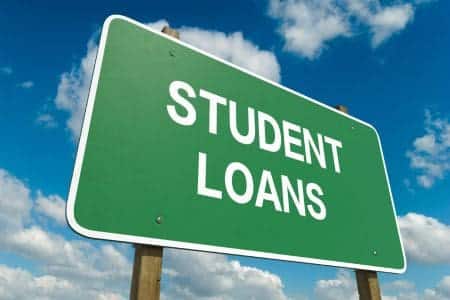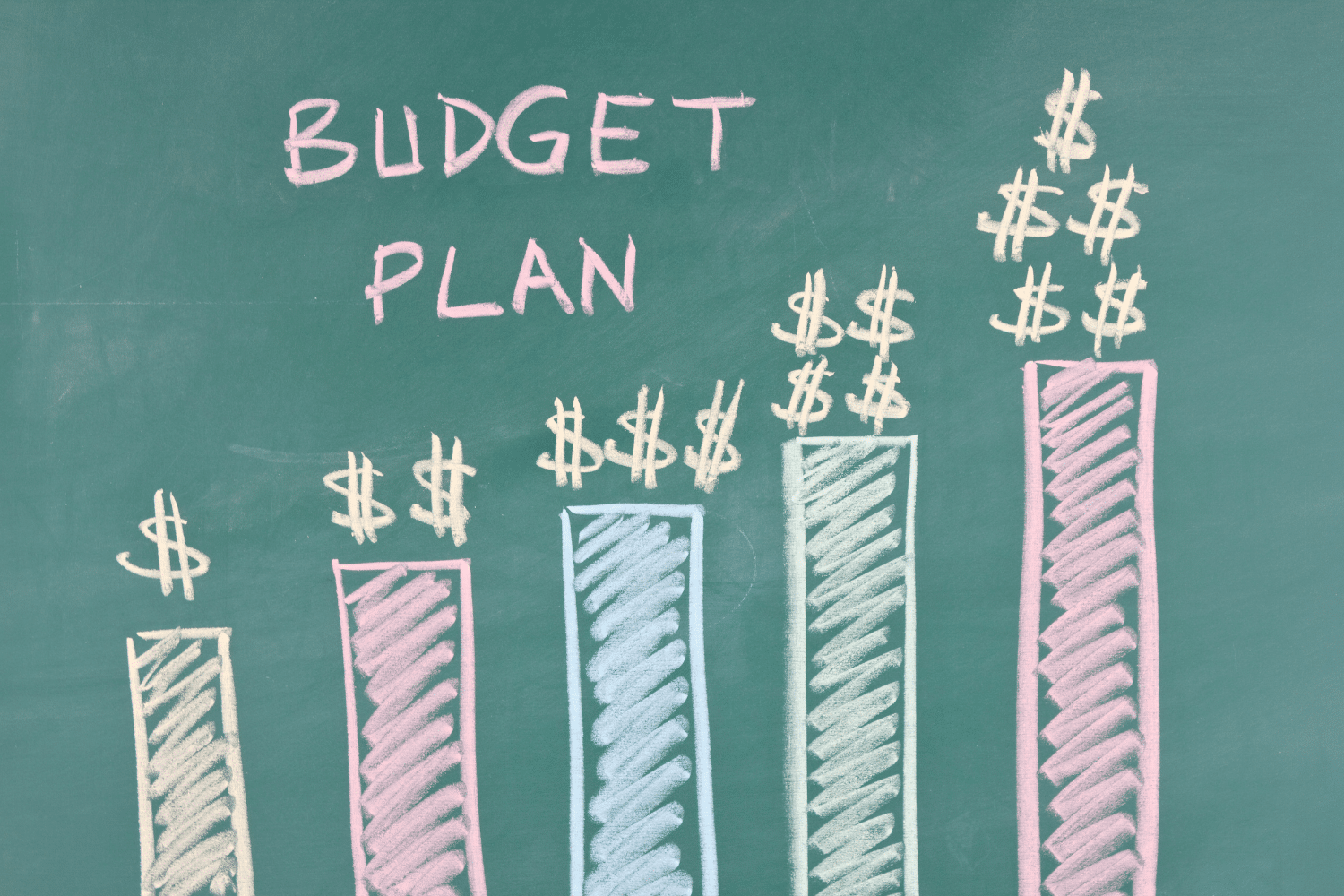Imagine landing a spot at your dream school but then encountering overwhelming student loan debt. Many students face this financial struggle. However, with the right knowledge about how student loans work, you can easily manage your payments. Are you ready for the journey? Let’s dive in!
Here’s What You’ll Learn:
- The government offers student loans as a financial aid option with lower interest rates and grace periods.
- Different repayment options and strategies exist, depending on loan type and individual capabilities.
- You can manage or reduce student loan debt by consolidating, refinancing, or taking advantage of loan forgiveness programs.
Defining Student Loans

Picture student loans as a bridge connecting you to your academic dreams. Borrowers specifically use these funds to cover educational expenses.
There are a variety of types of loans to choose from depending on your financial need. However, each type of loan needs to be payed back in full. These payments toward your loan balance are made monthly. Basically, a portion of the payment covers the interest charge, and the rest reduces the loan’s original balance.
In the world of higher education, federal student loans often come to the rescue.
The government tosses them like a lifebuoy, offering lower interest rates and a grace period upon graduation. Understanding how student loans work can help you navigate this financial aid option more effectively.
Cost of Student Loans
The expense of a student loan is like an iceberg, with a multitude of costs concealed beneath the surface. The visible tip represents the principal, while the submerged portion signifies interest rates and fees. It’s important to examine the terms and conditions of the loan, much like scrutinizing the blueprint of a building you’re about to construct.
Before taking the plunge into the sea of student loan debt, consider dipping your toes in the pool of grants and scholarships that don’t require repayment. Federal student loans finance a student’s “cost of attendance,” including tuition, fees, and living expenses. Just remember, the lifeboat of student loans should ideally not exceed your expected first year’s salary in your field.
Why Do Students Need Loans?
Consider the rising costs of higher education as a towering mountain. With tuition fees soaring high, student loans act as sturdy climbing gear, helping students scale their educational pursuits. Students are encouraged to first consider obtaining subsidized loans, followed by unsubsidized loans, and finally, private student loans.
Eligibility for federal loans requires certain documentation. There’s no income limit to ride the federal student aid train, but your income will determine the comfort of your seat. Buckle up and prepare for the journey ahead!
Types of Student Loans: Federal vs. Private

In the world of student loans to understand how they work you need to fully grasp, federal and private loans stand as two distinct landmarks. Federal student loans, issued by the government, are like a well-paved highway with fixed interest rates and various exit ramps in the form of repayment plans and loan forgiveness programs. On the other hand, private student loans, issued by banks and other financial institutions, are more like a meandering country road with variable interest rates and terms set by the lender.
Private student loans come with their own set of tolls, such as lender fees and limited options in choosing a repayment plan. These loans are generally unsubsidized and may have an annual cap, restricting the amount of aid available. Moreover, the interest rates for private loans can fluctuate often.
Federal Student Loans
Federal student loans are like the solid foundation of financial aid, providing support and stability in the form of fixed interest rates determined by Congress. Picture the different types of federal student loans as distinct branches stemming from the same tree. Direct Subsidized, Direct Unsubsidized, and PLUS loans each offer different benefits and cater to various student needs. Among these options, direct subsidized loans are particularly beneficial for students with financial need, while direct unsubsidized loans are available to a broader range of students.
The yearly loan limits for federal student loans cover a wide range, anywhere from $5,500 to $12,500. The best part? No credit check is required for most federal student loans! Such loans are attractive compared with private loan options, which might require a credit check.
Private Student Loans
Another key component to understand how student loans work is private student loans, issued by non-government entities such as banks, are like a less predictable river with fluctuating currents represented by variable interest rates. Borrowers must navigate the waters by meeting certain qualifications, such as age, education, citizenship requirements, and credit score. They may also need a co-signer to ensure a safe journey across the river.
Navigating the rapids of interest rates can be challenging. The 5-year variable-rate private student loans have an average interest rate of 4.78%, while the 10-year fixed-rate private student loans have an average interest rate of 7.22%. It’s clear that the journey through private student loans requires a good financial compass and an experienced navigator.
Interest Rates and Loan Costs

Interest rates and loan costs form the beating heart of student loans, pumping life into the borrowed funds. Federal student loan interest rates, fixed and set by Congress, and private student loan interest rates, determined by the lender and the borrower’s credit score, both play a vital role in the total cost of the loan.
Student loans are like a ticking clock, with every tick representing the accrual of interest. The rhythm of these ticks is determined by the type of interest rate – fixed or variable. Fixed interest rates remain steady, like the unwavering tick of a metronome. However, variable interest rates fluctuate in a much more erratic way.
Federal Student Loan Interest Rates
Federal student loan interest rates, determined by the federal government, provide a fixed and predictable path of borrowing. These interest rates are set by Congress, and they affect the total cost of the loan.
The interest begins to accumulate on federal student loans from the date of disbursement, except in the case of subsidized loans, which are like a shelter from the financial storm for undergraduate students. For instance, Direct PLUS loans for graduate students and parents currently have an interest rate of 5.3%, which is set to increase to 6.28%. Understanding how student loan interest works can help borrowers make informed decisions about their repayment strategies.
Private Student Loan Interest Rates
Private student loan interest rates are like changing weather conditions, determined by individual lenders and may be either fixed or variable. Just as rain begins falling immediately after the clouds gather, interest on private loans begins accruing from the date of disbursement.
Additionally, a part of the payment, like a stream of water, is directed towards the accrued interest. The rest of the payment flows towards reducing the loan balance. Private student loans interest rates are much like a weather pattern, with fixed rates providing a clear forecast and variable rates susceptible to unexpected changes.
Applying for Student Loans

Applying for student loans, be it federal or private, requires a lot of steps. It takes time to gather the necessary documents to submit your application. Using a loan marketplace while applying for private student loans helps the borrower to compare interest rates and loan terms from multiple private lenders in a single location.
Once the student loan is approved, the lender sends the funds to the school. Any remaining funds are then allocated to the student.
Federal Student Loan Application Process
Now, that you’re understanding how student loans work, let’s turn our attention to the federal student loan application process requires prospective students to fill out the the Free Application for Federal Student Aid (FAFSA). This map is filled with personal details and financial information, guiding the Department of Education towards the treasure trove of your financial aid.
An award letter from the school is your golden ticket that outlines the amount of student aid you’re eligible to receive. Navigating the federal student loan process may seem like a daunting journey, but with the right map and compass, it becomes a rewarding adventure.
Private Student Loan Application Process
The private student loan application process allows you to forge your own path. It requires researching available options, submitting individual applications, and directly interacting with the lender. The application requires you to provide financial and school information as well.
Overall, the journey to obtain private student loans involves several steps, from researching options to accepting and signing the loan agreement. Start your trek ideally 45 to 60 days before you need the funds, similar to stocking up provisions for a long journey ahead.
Repayment Options and Strategies

Repayment options and strategies are different routes you can take on your journey to becoming debt-free. Federal student loans offer flexible paths with various repayment plans, including income-driven options, and pause points in the form of deferment or forbearance.
Private student loans, on the other hand, may offer less flexibility, like a road with fewer exits. However, they can still offer various terms and conditions. The key is to select the route that best suits your financial capabilities and long-term goals.
Federal Student Loan Repayment Plans
Federal student loan repayment plans offer a variety of routes to the destination of loan repayment. The standard repayment plan aims to pay off the loan within 10 years. However, if the fast lane isn’t your speed, alternative lanes are available, such as income-driven repayment plans.
There’s also the option to take a breather at a rest stop, thanks to deferment and forbearance options. These allow you to temporarily pause payments without adversely affecting your credit score or defaulting on the loan.
Private Student Loan Repayment Options
Private student loan repayment options offer more personalized options, but often have less flexibility. The repayment schedules can range anywhere from five to twenty years or longer.
However, repayment generally starts immediately. It’s important to consider your post-grad occupation and potential wages when applying for a private student loan.
Managing and Reducing Student Loan Debt

Managing and reducing student loan debt is a crucial aspect of financial planning for your degree. Various strategies can help navigate the waters, including loan consolidation, refinancing, and loan forgiveness programs.
Think of loan consolidation as bringing multiple streams into a single river, combining various federal loans into one. Loan refinancing, on the other hand, is like changing the course of the river to find a better route. You do this by obtaining a new loan with potentially better terms.
Consolidation and Refinancing
Consolidation and refinancing options make the process of borrowing much easier to navigate. Consolidating federal student loans creates a Direct Consolidation Loan, a new channel that eases the flow of repayment by providing a single monthly payment.
Refinancing, on the other hand, is like changing the river bed to create a smoother flow. It involves obtaining a new loan to replace the existing one, potentially reducing the interest rate or extending the repayment term.
Loan Forgiveness Programs
Loan forgiveness programs provide a beacon of hope for those burdened with student loan debt. The Public Service Loan Forgiveness (PSLF) program can forgive the remaining loan balance once you meet certain conditions, resembling the calm after navigating through a storm.
Other forgiveness programs exist, like different paths leading to the same destination of debt relief, including Teacher Loan Forgiveness and Income-Based Repayment (IBR) and Pay As You Earn (PAYE) plans. These options offer a reprieve from the burden of repayment but come with their own caveats and requirements.
Which Path Will You Choose?
We’ve journeyed through the landscape of how do student loans work, exploring the rivers and roads that shape this financial terrain. We started by defining student loans, highlighting their purpose and the costs associated with them. Next, we navigated the two main types of student loans – federal and private, each with its unique characteristics and terms.
We delved into the heart of student loans, the interest rates, and costs, and explored the application process for both federal and private loans. Then, we examined the various repayment options and strategies, before finally discussing ways to manage and reduce student loan debt.
Navigating the world of student loans may seem daunting, but with the right knowledge and tools, you can chart a course towards a financially secure future. Remember, every journey begins with a single step, and understanding how do students loan work will be crucial to your success. So take that step today and set sail towards your academic dreams!
Frequently Asked Questions On How Do Students Loan Work?
Taking out student loans for college may be a wise decision depending on your career path and financial situation. However, make sure to exhaust any free money available through grants and scholarships first.
Before considering a student loan, assess the value a degree would add to your life. With the potential of greater earning power and lower health care costs, a college degree might be worth the investment.
Typically, you pay student loans through a graduated repayment plan, standard repayment plan, or an income-based repayment plan. Depending on the loan type, you make payments directly to either the government or a private lender.
You can manually make payments online or with a check.
The two main types of student loans are federal loans from the government and private loans from financial institutions.
To apply for federal student loans, complete the Free Application for Federal Student Aid (FAFSA).
The FAFSA is the gateway to federal student aid, including grants, work-study, and loans. It’s free to apply and takes about an hour to complete. Once you have done that you will be on the right path.
Loan consolidation combines multiple federal loans into one, while refinancing replaces an existing loan with a new one that has potentially better terms.



